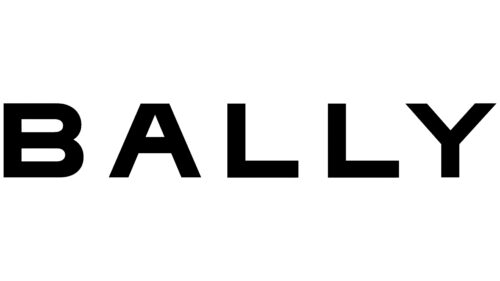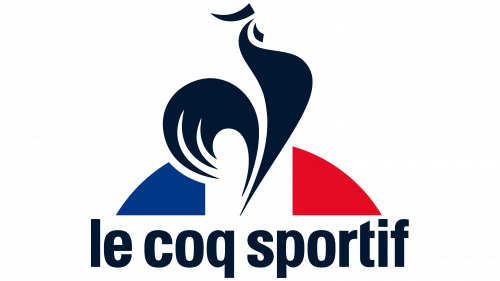The Bally logo perfectly reflects the company’s unique style, showcasing the brand’s beauty, sophistication, and charm. This trademark embodies the trust and loyalty of its customers, creatively conveying the key focuses of the company’s activities. The emblem highlights the brand’s individuality and reliability, while the minimalist color scheme draws attention to the uniqueness of the entire product line.
Founded in Switzerland in 1851, the brand has continually evolved, offering new collections for both men and women. The company’s growth is evident, with over 300 boutiques worldwide today. The brand’s luxury products have gained recognition for their quality and impeccable style.
Against a white background, the capital letters stand out elegantly, rendered in black with flawless precision. The font’s scale and height emphasize the company’s high status, and every detail of the visual mark draws attention to the brand’s name, affirming its prestige and success.
Bally: Brand overview
The company’s history began in the small Swiss village of Schönenwerd in 1851 when Carl Franz Bally and his brother Fritz founded a factory producing elastic tape. What started as a modest venture would become one of the world’s most recognized luxury brands.
Three years after its founding, 1854 the business began making shoes. Initially, the company produced simple house slippers, but the product line expanded over time. Carl Franz Bally’s ingenuity was evident as he introduced innovative technologies to shoe manufacturing.
The 1870s marked a period of significant growth. The company started exporting goods to neighboring countries and expanded globally, opening its first store in Montevideo, Uruguay, in 1876.
In 1892, Carl Franz Bally’s sons, Eduard and Arthur, took over management. Under their leadership, the business continued to evolve. 1899, the company entered the high fashion market by opening its first store in Paris.
The early 20th century brought important advancements. In 1908, the company introduced Goodyear technology, which allowed for the production of more durable and comfortable shoes. This technique is still used today for high-quality footwear.
The business expanded its presence in the 1920s and 1930s by opening stores in major cities like London and New York. During this time, the company also broadened its product line to include handbags and accessories.
Like many companies, it faced difficulties during World War II but quickly recovered and resumed its growth afterward.
The 1950s and 1960s were peak years for the brand, as it became a symbol of elegance and luxury. Notable figures, including members of the British royal family, wore its shoes. 1976, the brand gained further recognition by designing custom shoes for the Swiss Olympic team.
A major change occurred in 1977 when the family sold the company to Oerlikon-Bührle AG, a Swiss holding company. This marked the end of over 120 years of family management.
The company continued diversifying in the 1980s and 1990s, producing perfumes, eyewear, and clothing. In 1990, it strengthened its presence in the U.S. by acquiring Pinkus Brothers, an American shoe manufacturer.
Ownership changed again in 1999 when Texas Pacific Group, an American firm, purchased the brand. Under this new leadership, the company began rebranding and modernizing.
The 2000s were a period of transition. In 2002, the company closed its historic factory in Schönenwerd but continued to grow internationally, particularly in Asia.
In 2008, the Austrian private equity firm Labelux Group acquired the business. The new owners invested heavily to rejuvenate the brand and expand its market share.
In the 2010s, the company engaged in creative projects and collaborations with prominent designers and artists, launching exclusive collections and embracing e-commerce to adapt to digital trends.
In 2018, the Chinese textile company Shandong Ruyi Group became the main owner, highlighting the growing importance of the Asian market in luxury fashion.
By 2020, the company had operated more than 300 stores worldwide and continued to expand into ready-to-wear fashion while maintaining its traditional focus on footwear and accessories.
In 2021 and 2022, the brand adapted to shifts in the luxury industry by focusing on digitalization and personalized customer experiences. The company also continued its global expansion, especially in Asian markets.
As of 2023, the brand remained a major player in the luxury fashion industry, blending innovative design with Swiss craftsmanship. Throughout its 170-year history, the company has evolved from a small family-run business to a globally recognized luxury brand, maintaining its core values of elegance, quality, and innovation. Despite numerous changes in ownership and management, the business has retained its identity and remains a leading name in fashion.
Meaning and History
What is Bally?
This Swiss luxury fashion brand is known for its classic style and craftsmanship. Specializing in leather goods, footwear, and accessories, the company has established itself in luxury fashion by seamlessly combining traditional methods with innovative design. The brand’s products, whether small leather goods, ready-to-wear clothing, or elegant shoes and wallets, are distinguished by superior materials and elegance. The company’s attention to detail and comfort, along with its refined sophistication and clean lines, are signature traits that set it apart. With a presence in key fashion capitals worldwide, the brand successfully showcases its luxurious atmosphere and unique minimalist style.
Before 2023
The first logo presented to the wider audience was distinguished by its graphic sophistication and carefully thought-out color scheme. It appeared as a complete work of art, reminiscent of an artist’s craftsmanship, where simplicity and originality harmonized through two contrasting shades. The letters conveyed the impression of luxury clothing—each serif and curve added elegance and charm to the font.
The design elements reflected a subtle parallel between the brand’s refined name and the quality of its products. Every handbag, blouse, or pair of unique trousers embodied exceptional craftsmanship, and the emblem visually represented these qualities. The company’s products always stood out for their impeccable style and high quality, and the identity fully communicated these features, creating a striking and memorable impression.
2023 – today
In 2023, the brand’s identity was refreshed, becoming more elegant and refined. In line with minimalism trends, the logo shed its previous grandiosity and scale, embracing restraint and precision. It now conveys the company’s luxury status while remaining simple and understandable. The previously used serifs and decorative curves adorned the letters have disappeared, giving way to clean lines and a modern style.
The Bally logo embodies minimalism and refined luxury, which has become the brand’s signature. The font is rendered in a strict and clear style with large capital letters, each appearing bold and confident, emphasizing the solidity and longevity of a company that has existed for over 150 years. The black color symbolizes stability and the traditions that the company upholds and develops while operating in the premium market.
The visual mark’s hallmark is its simplicity, which, in this case, is its strength. The minimalism highlights the brand’s confidence in its name and product quality. The straight and clear lines of the letters convey a sense of stability and reliability. The design suggests the brand does not need additional visual embellishments, relying on its strong name and impeccable reputation.
The white background creates a sense of cleanliness and openness, emphasizing the contrast with the bold black text. The emblem is easy to read and memorable, underscoring the brand’s idea that its products represent understated luxury for those who value quality and refined taste.






